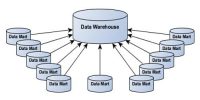Strategic control is a term used to describe the process used by organizations to control the formation and execution of strategic plans; it is a specialized form of management control, and differs from other forms of management control (in particular from operational control) in respects of its need to handle uncertainty and ambiguity at various points in the control process.
Four types of strategic control –
- Premise Control:
Every strategy is based on certain planning premises or predictions. Premise control is designed to check methodically and constantly whether the premises on which a strategy is grounded on are still valid. If you discover that an important premise is no longer valid, the strategy may have to be changed. The sooner you recognize and reject an invalid premise, the better. This is because the strategy can be adjusted to reflect the reality.
- Special Alert Control:
A special alert control is the rigorous and rapid reassessment of an organization’s strategy because of the occurrence of an immediate, unforeseen event. An example of such event is the acquisition of your competitor by an outsider. Such an event will trigger an immediate and intense reassessment of the firm’s strategy. Form crisis teams to handle your company’s initial response to the unforeseen events.
- Implementation Control:
Implementing a strategy takes place as a series of steps, activities, investments, and acts that occur over a lengthy period. As a manager, you’ll mobilize resources, carry out special projects and employ or reassign staff. Implementation control is the type of strategic control that must be carried out as events unfold. There are two types of implementation controls; strategic thrusts or projects, and milestone reviews. Strategic thrusts provide you with information that helps you determine whether the overall strategy is shaping up as planned. With milestone reviews, you monitor the progress of the strategy at various intervals or milestones.
- Strategic Surveillance:
Strategic surveillance is designed to observe a wide range of events within and outside your organization that are likely to affect the track of your organization’s strategy. It’s based on the idea that you can uncover important yet unanticipated information by monitoring multiple information sources. Such sources include trade magazines, journals such as The Wall Street Journal, trade conferences, conversations, and observations.
















